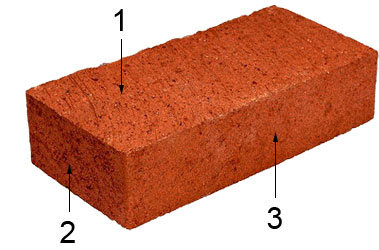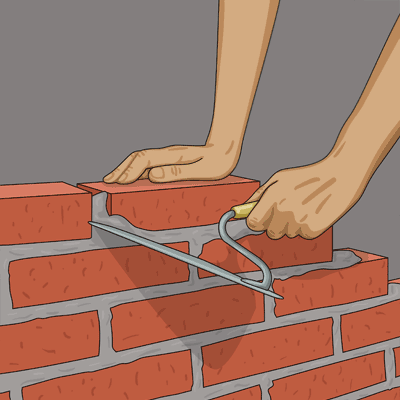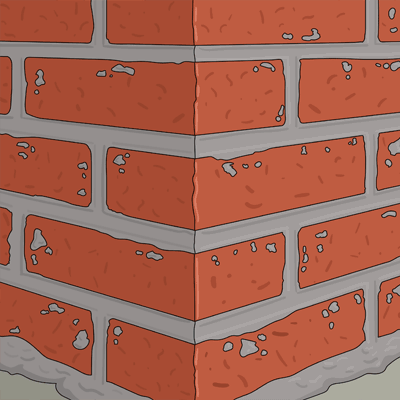Bricks have been a staple in architecture for centuries. Their durability and versatility have made them a favorite among builders and designers alike.
But bricks are not just about function. They also play a significant role in the aesthetic appeal of a structure.
Enter architectural designer bricks. These specialized bricks are not your ordinary building blocks. They are designed with both form and function in mind, offering a unique blend of practicality and style.
In this article, we delve into the world of architectural designer bricks. We explore their unique characteristics, their role in modern architecture, and how they can enhance the aesthetic and structural integrity of buildings.
Whether you’re an architect, a builder, or a homeowner planning a construction project, this guide will provide valuable insights. From selection process to installation tips and maintenance advice, we’ve got you covered.

Join us as we uncover the beauty and potential of architectural designer bricks.
Understanding Architectural Designer Bricks
Architectural designer bricks are a step up from traditional bricks. They are specially designed to meet the aesthetic and functional demands of modern architecture.
These bricks come in a variety of shapes, sizes, colors, and textures. This diversity allows architects and designers to create unique and visually appealing structures.
But what sets architectural designer bricks apart is not just their visual appeal. They also offer superior performance in terms of durability, thermal efficiency, and acoustic properties.
Here are some key features of architectural designer bricks:
- Variety in color, texture, and size
- High durability and strength
- Excellent thermal and acoustic properties
- Customization options for unique designs
The Evolution of Bricks in Architecture
Bricks have been used in construction for thousands of years. From the ancient pyramids of Egypt to the Great Wall of China, bricks have stood the test of time.
In the 20th century, the advent of industrialization brought about significant changes in brick manufacturing. This led to the development of designer bricks, which offered more variety and customization options.
Today, architectural designer bricks are at the forefront of modern architecture. They are used in a wide range of projects, from residential homes to commercial buildings and public spaces.

Unique Characteristics of Designer Bricks
Architectural designer bricks are not your average bricks. They are designed with a keen eye for detail, resulting in bricks that are as beautiful as they are functional.
One of the unique characteristics of designer bricks is their variety. They come in a wide range of colors, from traditional reds and browns to more contemporary grays and whites.
In addition to color, designer bricks also offer a variety of textures. This allows architects and designers to create unique and visually appealing structures.
Finally, designer bricks are known for their durability and performance. They are built to last, offering excellent resistance to weathering and wear.
Types and Applications of Architectural Bricks
Architectural designer bricks come in a variety of types. Each type has its own unique characteristics and applications.
For instance, there are facing bricks. These are used primarily for their aesthetic appeal. They come in a wide range of colors and textures, allowing for a high degree of customization.
Then there are structural bricks. These are designed for load-bearing applications. They are known for their strength and durability.
Other types of architectural bricks include fire bricks, which are used in high-temperature environments, and paving bricks, which are used for driveways and walkways.
Here are some common types of architectural bricks:
- Facing bricks
- Structural bricks
- Fire bricks
- Paving bricks
Selecting the Right Brick for Your Project
Choosing the right brick for your project is crucial. It can make a significant difference in the final outcome.
The first step is to consider the purpose of the brick. If it’s for a load-bearing wall, you’ll need a structural brick. If it’s for a facade, a facing brick would be more appropriate.
Next, consider the aesthetic you’re aiming for. The color, texture, and size of the brick can greatly influence the look and feel of the structure.
Finally, consider the local climate and environmental conditions. Some bricks perform better in certain conditions than others. For instance, in a rainy climate, you might want to choose a brick with excellent water resistance.
Aesthetic Influence and Customization
Architectural designer bricks offer a wealth of aesthetic possibilities. They can be customized to suit a wide range of design styles and preferences.
The color of the brick can greatly influence the overall look of a building. From traditional reds and browns to more contemporary grays and whites, the color options are virtually limitless.
The texture of the brick can also add visual interest and depth to a design. Smooth, rough, sandblasted, or tumbled – each texture creates a different aesthetic effect.
Color, Texture, and Size in Design
When it comes to architectural designer bricks, color, texture, and size matter. They can dramatically alter the appearance of a building.
The color of a brick can set the tone for the entire design. It can create a sense of warmth, coolness, or neutrality.
The texture of a brick can add dimension and character. It can make a building look rustic, modern, or somewhere in between.
The size of a brick can influence the scale and proportion of a building. It can make a structure appear larger or smaller, depending on the size of the bricks used.
Innovative Design Trends with Architectural Bricks
Architectural designer bricks are at the forefront of many innovative design trends. They are being used in new and exciting ways to create stunning architectural masterpieces.
One trend is the use of oversized bricks. These create a bold, dramatic effect and can make a building stand out.
Another trend is the use of bricks with unusual shapes or patterns. These can add a unique, artistic touch to a design.
Finally, there’s the trend of blending different types of bricks. This can create a rich, layered look and add depth and complexity to a design.
Sustainability and Environmental Benefits
Architectural designer bricks are not just aesthetically pleasing. They also offer significant environmental benefits.
Bricks are made from natural materials, primarily clay. This makes them a sustainable choice for construction. They can also be recycled, reducing waste and conserving resources.
Moreover, bricks have a long lifespan. They can last for hundreds of years with minimal maintenance. This durability makes them a cost-effective and environmentally friendly building material.
The Role of Bricks in Energy Efficiency
Bricks also play a key role in energy efficiency. They have excellent thermal mass properties, which can help regulate indoor temperatures.
In hot climates, bricks can absorb heat during the day and release it at night. This can reduce the need for air conditioning and lower energy consumption.
In cold climates, bricks can store heat from a heat source and slowly release it. This can reduce the need for heating and improve energy efficiency. The use of bricks can therefore contribute to a building’s overall energy performance.
Installation and Maintenance of Designer Bricks
Installing architectural designer bricks requires skill and precision. It’s crucial to follow the manufacturer’s guidelines to ensure the bricks are installed correctly.
Maintenance of designer bricks is relatively straightforward. Regular cleaning can help maintain their appearance and prevent damage. It’s also important to inspect the bricks regularly for signs of wear or damage.
Tips for Long-Lasting Brickwork
To ensure your brickwork lasts, consider using a sealant. This can protect the bricks from weather damage and prolong their lifespan.
Avoid using harsh chemicals when cleaning your bricks. These can damage the surface and cause discoloration.
Finally, consider hiring a professional for any repairs. Incorrectly repaired brickwork can lead to further damage and may affect the structural integrity of the building.
Conclusion: The Future of Architectural Designer Bricks
Architectural designer bricks have a promising future. With advancements in technology, we can expect to see more innovative designs and applications.
Sustainability will continue to be a key focus. The use of recycled materials and energy-efficient manufacturing processes will become more prevalent.
In conclusion, architectural designer bricks offer a unique blend of aesthetics, durability, and sustainability. They are a testament to the endless possibilities of architectural design and a key element in shaping our built environment.
